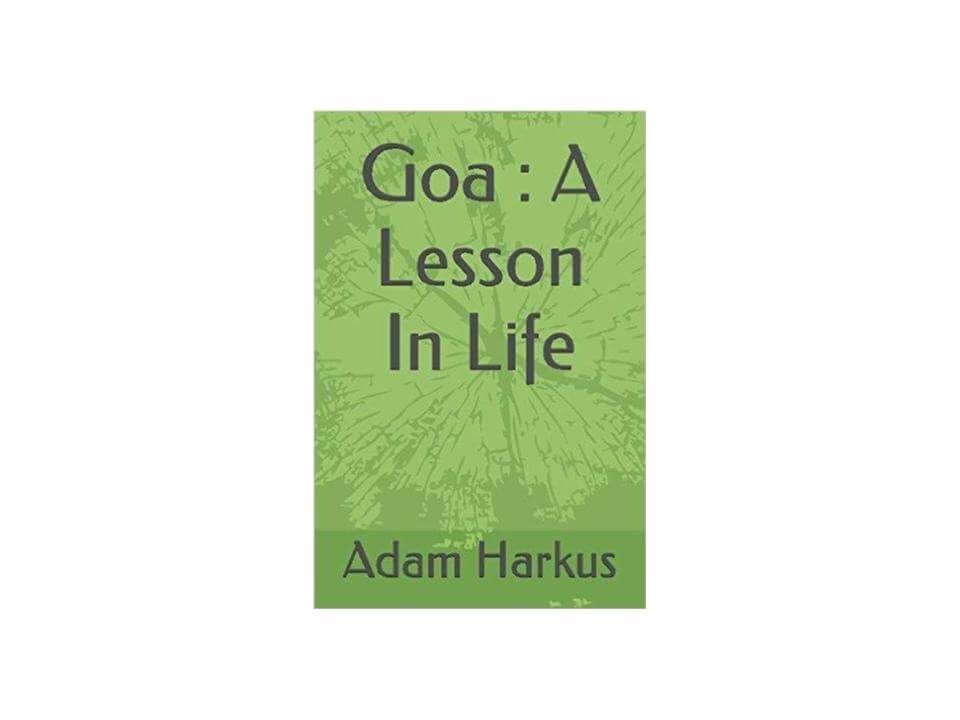
Back in January 2017, I released my debut self-published book. Goa: A Lesson In Life. Here are the 5 lessons I’ve learned in putting together my next publication. Prague: This Musical City
Lesson 1. The Cover is VERY important
Don’t just a book by its cover. That’s what I used to believe. With Goa: A Lesson in Life, I was too eager to get it out there, a cover would have been too much work, or would have involved a cost. As this was my first publication, I was already fatigued by the hurdle of understanding how to self-publish in the first place, so a cover was only adding to the challenge. I chose to stick to an appropriate Amazon template, the closest I could find for the subject matter.
Does anyone really care that much about the cover? especially for ebooks? Unfortunately, going from the feedback received… Yes, they do!. A cover sets you apart from the crowd. It’s your shop window, a chance to grab a prospective reader’s (or customer’s) attention. It shows that you’ve cared, gone the extra mile, added that extra coat of polish, and above all, advertises your professionalism.
In hindsight, the reasons for having a cover far outweigh the reasons against. I’m no graphic designer, but I could’ve easily used a freelance site to get one professionally made for £10. Was it really worth NOT doing?
For my next release, top of the list is a professional-looking, cover that stands out and encapsulates the content. Maybe I’ll start my research on Fiverr
Lesson 2. Don’t skimp on the editing
Editing, particularly self-editing, is hard. You become blind to your own mistakes and soon get bored of trudging through the same passages over and over again. I was lucky enough to have Goa: Lesson in Life narrated in an audiobook version, which meant some errors were ironed out in the process.
Like the cover, however, time spent on the editing matters and pays off, as it adds polish and professionalism that raises you above the masses. Grammar and spelling errors get noticed, why wouldn’t they? Your audience are readers, so why not invest the time in giving them something that’s easier to read.
A common mistake that was flagged up was the use of it’s. Something really simple I know but I had always incorrectly used it’s as a possessive, e.g. it’s colour. Correct English is to only use it’s an abbreviation for it is. E.g. its colour.
I also make a point of searching the whole of the manuscript for problem words. E.g. their, there, they’re. Just to make sure I’m using them correctly.
Lastly, WordPress Yoast SEO has flagged up my over-use of passive voice. I’m only beginning on that journey (it’s only my first book after all).
Oh, and do use Grammarly!
Lesson 3. Consideration for the audience
Goa: A Lesson in Life was less about Goa, and more a personal journal. It represents (to me) a way of documenting the effect that Goa had on my outlook to life. It made a huge impact on me, so this is my time-capsule if you will. Captured forever.
As a debut author, I had nothing to build from, so I simply wrote from the heart, in a style that felt most natural. Although this proved to be successful in book sales, For Prague: A Musical City, I need to focus more on the reader’s needs, with more emphasis on describing the place and giving value to the reader, rather than the philosophical side of things. It needs to be more of a travel publication, designed for that particular audience/genre.
Having said that, I still want to keep my own style and personality, it’s all I have that’s unique, it flows easier, and it worked last time out.
Lesson 4. Tighten the structure
Perhaps with Goa: A Lesson In Life, a got a little carried away? I meandered a little. The structure was more story-like in its chronological order of events, requiring you to read the whole thing for it to make sense.
With Prague: The Musical City, I’m structuring by location, so that if the reader chooses, they can dip in and out on areas of interest (The Musical City. The Old Town Square & Astronomical Clock for example). Of course, the best way to read it would still be as a whole, but just giving the reader that extra option can only be a good thing can’t it?
Lesson 5. Keep and develop what was good about Book #1
All the above points are corrections, ways to improve. But don’t forget about the good things, all the positive feedback (5 star reviews no less!). I love writing, I can write quickly, and have developed a knack for expression through language. I write on a personal level and can identify with people. Let’s hope I can keep that.
When I’m going about making the improvements for book #2, I need to be careful not to strangle any sense of personality, expressiveness, humour and whimsy out of it, as that’s what sets you apart.
All the above points need to be balanced, don’t kill the vibe. Spend time sorting the cover, structure, editing and audience considerations, but remember that your most important asset is your talent and expression, that delicate, intangible creative spark.
I’m only one and a half books in, and already the processes of writing, editing and critiquing has improved my grammar and writing in general. Just like anything else, practice makes perfect, but in this arena, YOU can be your biggest influencer and teacher.


